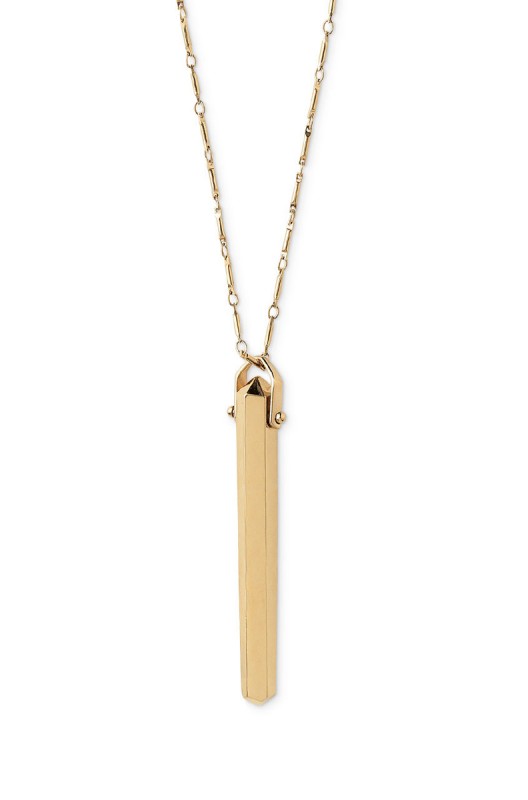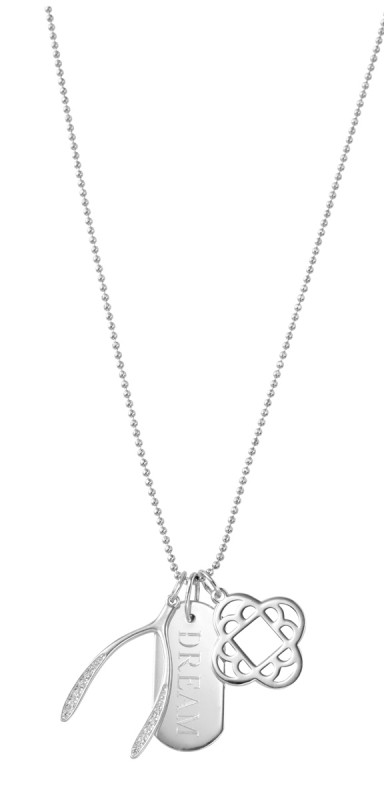Stella & Dot is taking the age-old Tupperware and Mary Kay selling model and revolutionizing it for the chic, modern woman in search of a flexible career. Co-founded by two Stanford grads, Blythe Harris and Jessica Herrin are building a booming business, all while empowering other women to be entrepreneurs in their own right through their social selling platform that allows their sellers or “stylists” as they call them to run their own trunk shows and e-commerce businesses. And did we mention this is jewelry and accessories that you actually want to wear, at prices that range from as low as $19 to $300? We caught up with Harris in the California-based brand’s New York offices to find out how it all works.
How was Stella & Dot born?
My partner Jessica, our CEO, founded the business model and the concept in 2004 and then we partnered to co-create the brand and relaunched it as Stella & Dot in 2007. We named it after our grandmas. I met Jessica at our ten-year college reunion at Stanford.
Was that when you decided to partner on the business?
We hadn’t met in college, but when I met her she told me, “I have this idea. I want to do jewelry in this channel.” She needed a partner to do the product and the creative side. I was like, “Wow, do I have the right product for you!” I had been working in jewelry and I knew there was a huge opportunity in mid-level jewelry. I was at Banana Republic and grew the business to $50 million very, very quickly. I had seen explosive growth and really before that there weren’t any nationally known brands between Claire’s and Tiffany’s. I was really going after that, so we rode that wave of the incredible trend and birth in costume fashion jewelry.
What is your business model all about?
The premise of our model is to provide flexible entrepreneurial opportunities for women. When I met Jessica I was at this point in my life where I was thinking about having kids and I looked around at my friends who had kids and they all either worked all the time and never saw their kids, or they had given up their career. Nobody had found the right balance. I was really passionate about the idea of creating a flexible, modern opportunity for women and this model of social selling and taking this traditional sort of Tupperware model and revolutionizing it for the age of e-commerce and social media.
How does the process work?
We have what we call “stylists” who sign up for $199. With that, they get a starter kit of $350 worth of jewelry of their choice, and professional business supplies such as lookbooks, order forms, and more. They own the samples and then they go out and host trunk shows. Through their own social network they’ll host a launch party with their own friends and then very quickly they’ll network and start getting other people to host trunk shows. We call those people “hostesses.” So you can participate in the brand in two ways: you can either be a stylist, where you earn 25 to 35 percent commission from what you sell (the average trunk show generates about a thousand dollars, so for a two-hour trunk show you’re earning a very healthy income) or you can be a hostess, where you share your guest list and open your home to the stylists for trunk shows.
What does the hostess get out of the deal?
The average hostess earns about $300 in product, which is a lot of product from us. It’s just a fun time to get your girlfriends together, try on some jewelry, have some wine, and eat some desserts. Our whole model is about having fun and creating this community.
What was Jessica’s background before she came up with the Stella & Dot idea?
She is a serial entrepreneur. She founded what’s now known as the Wedding Channel. She is a visionary. She was one of the first people to really understand the whole idea of retail partnerships and e-commerce. Basically what the Wedding Channel really did was aggregate all of these different retailers on your registry into one place.
Is that still a part of that business?
She sold it. But after an appearance on Oprah she had all of these women writing to her asking her how they could also create their own business. She was like “You don’t want to start your own business, it’s really hard!” Not that you don’t want to start your own business, but you just need to know what you’re getting into. You work 24/7. So she was inspired to create a modern entrepreneurial opportunity for women. Many women dream of owning a boutique someday, but then you have to hold inventory. We deal with the entire back end. We have our own distribution center and we ship the product directly to the customer in 2 to 3 days. All of our stylists have their own e-commerce websites. We create the assets for them to share on Facebook and online invitation systems. Really what they’re doing is connecting their friends and their friend’s friends with the product.
What was your background before Stella & Dot?
After Stanford, where I studied painting and sculpture, I eventually went to business school at Columbia. I ended up working for LVMH where I worked for their watches and jewelry division and I helped launch the De Beers business in retail. I learned the business side, the merchandising side, and the marketing side. Later on, I knew I wanted to work for Banana Republic, because they had just launched jewelry and I knew it was going to be huge. They were the first kind of mid-level retailer to do jewelry. I ended up being their head merchant.
You can also buy direct online from Stella & Dot. How does that affect your stylists?
We always give commission to the nearest geographical stylist to the address of the client that bought the piece. It’s very cool to be in a mission driven business because our lens for any decision-making is “Will this benefit our stylists?” and “Will this earn them more dollars per hour?” But most people are actually entering the brand experience through a particular stylist, through their website or through their trunk show.
Do you plan on launching other categories?
We launched bags and scarves in Summer 2013. We sold out in three weeks. We’re evaluating things, but accessories are very portable and very shareable, which is good for this model so I think for the near term we’ll concentrate on accessories, but we’ve got a lot of ideas on where to take it. This is a spoiler, but next summer we’re going to launch tunics.
How many stylists do you have in total right now?
We have 18,000 active stylists and we’re in multiple countries including the U.K., France, Germany, Ireland, Puerto Rico, and Canada.
How much do your most successful stylists earn on average?
A few are earning six figures and one is earning seven figures. They’re essentially our business partners. They have built this business. Our very top stylist runs a team of thousands of people and her husband quit his job to become her full time business manager. They’re running major organizations. I want to emphasize that those women aren’t just working a couple of hours a week. The average stylist wants to be working 5 to 10 hours a week not 40. They want to make a little extra each month to pay their mortgage, their kids’ ballet lessons, or a second car. We hear stories like one woman whose husband is fighting in Iraq and she needed to pay her mortgage or one woman who saved up to adopt a baby or a single mom trying to buy a house. It’s great because it combines fashion and style with something that is meaningful. That’s the heart of the experience. It’s about women helping women.
- Sutton Necklace
- Casablanca Necklace
- Renegade Cluster Bracelet
- Chantilly Lace Cuff
- Pegasus Necklace
- Casablanca Chandeliers
- Pave Chevron Necklace
- Pave Spear Ring
- Rebel Pendant
- Rebel Pendant
- Clover Charm Combo Gold
- Clover Charm Combo Silver
- Set
- Double Clutch metallic
- Paris Market Tote
- Westwood Scarf

















